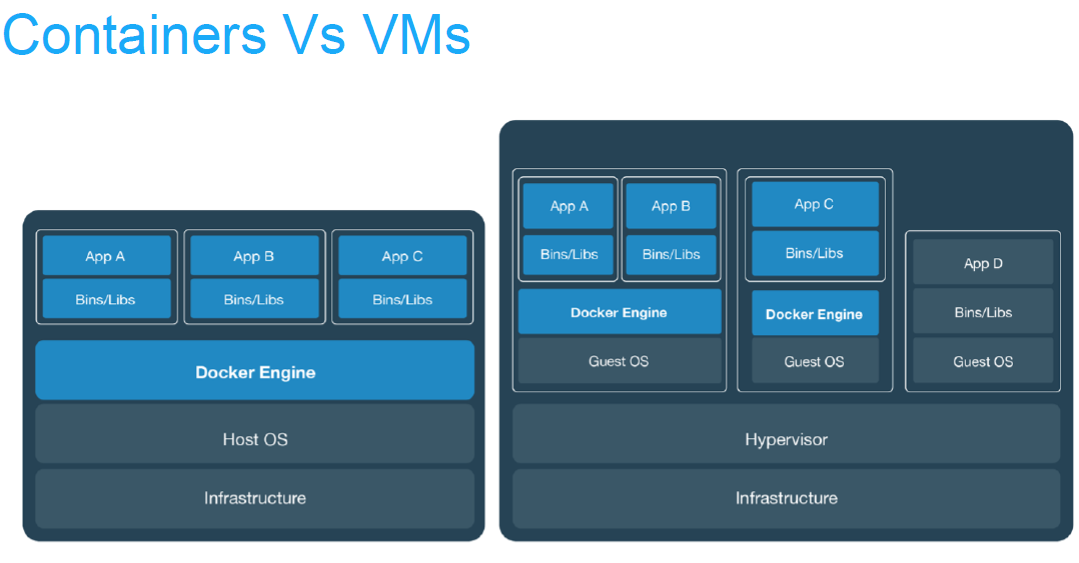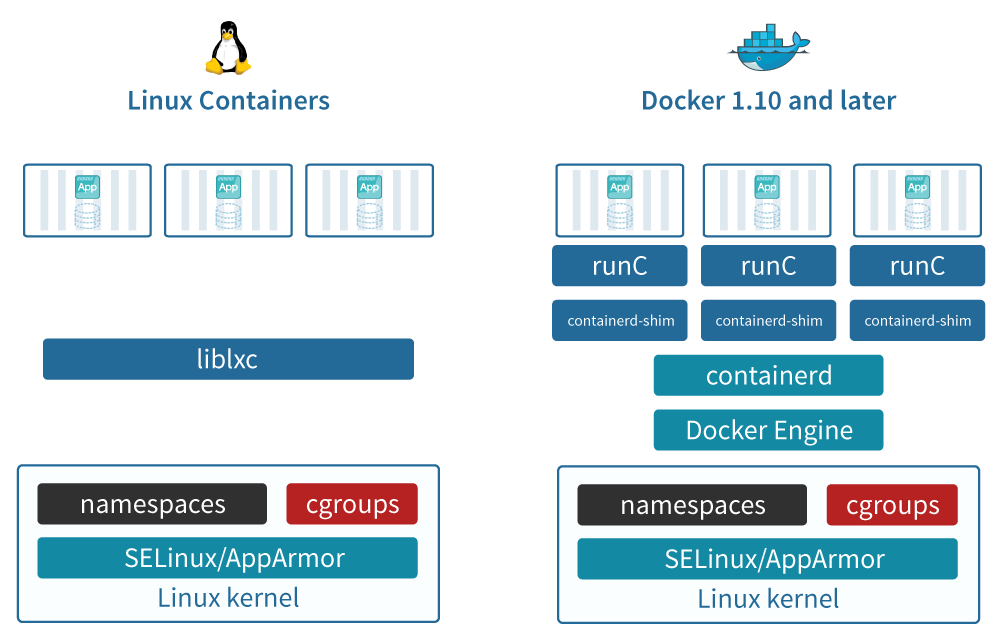Containers
Introduction to Linux containers.
What are containers?

A Container can be seen as a minimal virtual environment that can be used in any Linux-compatible machine (and beyond).
Using containers is time- and resource-saving as they allow:
Controlling for software installation and dependencies.
Reproducibility of the analysis.
Containers allow us to use exactly the same versions of the tools.
Virtual machines or containers ?
Virtualisation |
Containerisation (aka lightweight virtualisation) |
|---|---|
Abstraction of physical hardware |
Abstraction of application layer |
Depends on hypervisor (software) |
Depends on host kernel (OS) |
Do not confuse with hardware emulator |
Application and dependencies bundled all together |
Enable virtual machines |
Every virtual machine with an OS (Operating System) |
Virtual machines vs containers

Pros and cons
ADV |
Virtualisation |
Containerisation |
|---|---|---|
PROS. |
|
|
CONS. |
|
|
History of containers
chroot
chroot jail (BSD jail): first concept in 1979
Notable use in SSH and FTP servers
Honeypot, recovery of systems, etc.

Additions in Linux kernel
First version: 2008
- cgroups (control groups), before “process containers”
isolate resource usage (CPU, memory, disk I/O, network, etc.) of a collection of processes
- Linux namespaces
one set of kernel resources restrict to one set of processes
